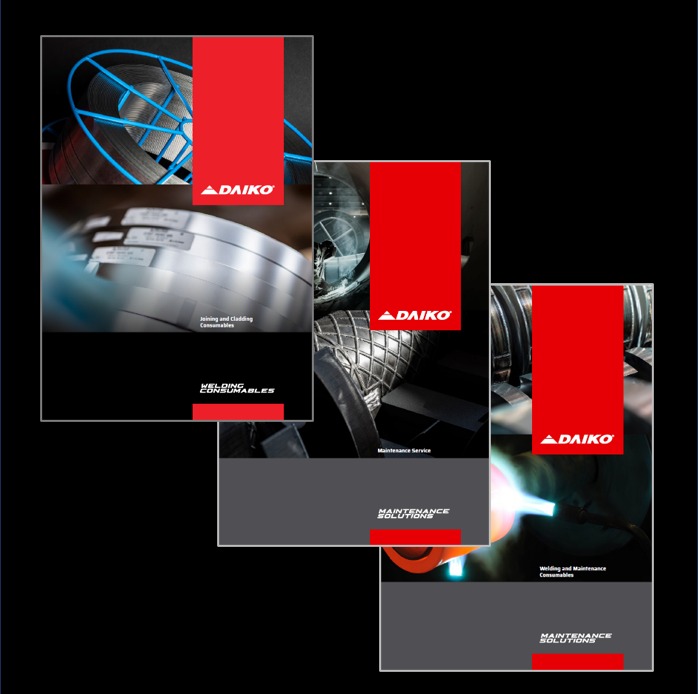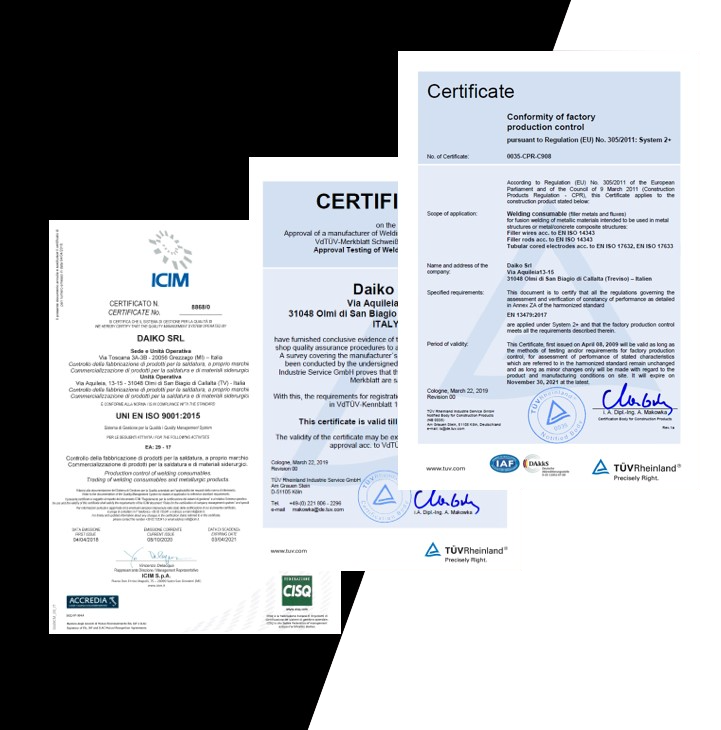- Home
- >
- All DAIKO products
- >
- CAST IRON
- >
- NiFe-Cu
NiFe-Cu
Application
The deposited material shares a pronounced visual resemblance to cast iron, rendering it exceptionally well-suited for addressing casting defects in newly fabricated parts. With a hardness measuring approximately 165 HBOK, the deposition process is conducted on materials at ambient temperature or with a slight preheating. The resulting weld metal boasts excellent machinability. Noteworthy is the enhanced weldability exhibited when dealing with castings containing elevated phosphorus levels, specifically around 0.20%, compared to electrodes classified as ENi-CI. Practical experience underscores the capability of achieving satisfactory welds, even in challenging conditions such as thick and highly constrained weldments. This holds true not only for conventional cast iron but extends to high-strength and engineering-grade cast iron as well.
Alloy Type
Electrodes with special basic-graphite coating and alloy core nickel and copper.
Microstructure
The structure
depends on the chemical composition and the
speed of solidification and subsequent
cooling down.
Materials
Used for normal grades of cast iron such as gray-, ductile- and malleable irons and for joining work pieces of various types of cast iron,
including nodular iron, and for welding them to steel and some nonferrous base metals.
Welding & PWHT
It is imperative to eliminate the casting skin from the weld area through methods such as machining, grinding, chipping, or other appropriate means. When addressing casting defects, precision is essential to ensure the removal of any flawed metal until reaching a solid base metal before commencing welding. Additionally, the removal of oil, grease, dirt, or any foreign material is crucial and can be achieved using suitable solvents. In cases where oil, grease, or solvents have penetrated the casting, heat application to the welding area is recommended until volatilization is no longer observed. Typically, a temperature of 400°C proves sufficient for this operation. For excessively greasy castings, flash heating the welding surfaces to around 540°C can effectively drive off the grease in a gaseous state. While preheating is not universally mandatory, it is commonly employed. Preheating in the range of 200-350℃ is advisable, followed by a gradual cooling process after welding. Maintaining an interpass temperature between 350°C and 450°C is crucial to mitigate the risk of welding cracks. In the context of large castings, intermittent welding may be deemed desirable to ensure a more uniform temperature distribution. This involves keeping the casting warm to the touch but preventing it from becoming excessively hot.
Products of the line NiFe-Cu
| Product name | Process | AWS specifications | EN ISO specifications | |
| DAIKOWT 330Cu | GTAW |
AWS A5.14
ER NiCu-7 |
EN ISO 18274
S Ni 4060 |
|
| G-TECH 330Cu | SMAW |
AWS A5.15
(ENiCu-B) |
EN ISO 1071
E C NiCu 1 |
|
| G-TECH 306Cu | SMAW |
AWS A5.15
(ENiFe-Cl) |
EN ISO 1071
(E NiFe-1) |
|
| DAIKOWM 330Cu | GMAW |
AWS A5.14
ER NiCu-7 |
EN ISO 18274
S Ni 4060 |


